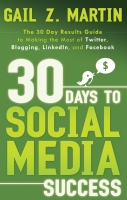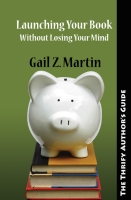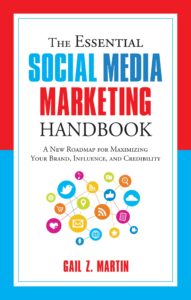Recently I had a call from a business owner I’ll call Jane (not her real name). She had been referred by a client and friend of mine, and Jane was shopping around for new talent to handle her PR and social media.
The problem, Jane said, was that while her PR folks were getting her into the news and the social media people were driving traffic to her web site, people weren’t buying. And that, she felt, was the fault of the PR and social media folks.
Hmmmm….maybe. But the longer Jane talked, the more I heard a full-blown case of the three most deadly social media mistakes.
Mistake #1: A hammer is not a chainsaw. It’s not the hammer’s fault you can’t cut down trees with it.
Different tools have different functions. You don’t use a waffle iron to iron shirts, and you don’t use a steam iron to make waffles. If you tried to do so, it wouldn’t be the tool’s fault if it didn’t perform according to your (mistaken) expectations.
Social media and PR are not advertising. Social media is a tool to build relationships, increase engagement and raise visibility. PR is a tool to raise visibility, cement your professional platform and increase credibility. Both tools can also work to drive traffic to your web site. But neither tool is intended to directly increase sales. That’s advertising’s job, as well as good web design.
Too many people are like Jane, thinking of social media and PR as another form of advertising, and then they’re upset when their “ads” don’t result in sales.
Social media and PR are indirect reputation builders. They give you the “I’ve seen your name everywhere” viral buzz, and they help you establish yourself with the credibility of being in the news and the accessibility of being interactive online, but they are not meant to create direct sales.
Paid advertising and direct mail are tools to create an immediate “buy now” incentive. A well-designed e-commerce web site can also encourage shoppers to become buyers. Don’t assume that all promotional tools do the same thing.
Mistake #2: One-size-fits-all metrics don’t work.
Jane went on to tell me that she was unhappy with her current social media and PR people because while they were driving traffic to her site and resulting in news placements (which means they were succeeding at what they set out to do!) they were not resulting in a three-to-one payback of her investment.
Where did she get that 3:1 ratio? Who knows? Someone along the line told her that, or she read it somewhere. Once again, she’s mistaking an advertising metric with a social media and PR metric.
How do you know if your social media is working? Here are some metrics:
- Your business page is seeing steady growth in page “likes” or Twitter followers
- Your posts are getting consistently high numbers of likes/shares/YouTube clicks/comments/retweets/favorites
- People commenting on your posts have a genuine interest in the topic (you are reaching your ideal audience)
- Your posts are consistent and on-topic, and you are responding to comments and new followers.
- Your Facebook ads are getting click-throughs and a large number of views.
- Your posts about upcoming webinars or links to articles or other resources on your web site are getting click-throughs and sign-ups.
- Your page is helping you increase your newsletter opt-ins.
How do you know if your PR is working?
- Your news gets into the desired media on a fairly regular basis. (Awards, promotions, new hires, product launches, events, etc.)
- You are getting a steady stream of requests for interviews, profiles and Q&A.
- People say “I see your name in the news all the time!”
- You are getting articles and blog posts you’ve written placed regularly in the appropriate industry media.
Social media increases engagement. PR increases visibility. These are long-term investments, not quick sales gimmicks. Sorry, but the mystical/magical 3:1 ratio Jane was using doesn’t apply.
P.S. If you are using any metrics from before the 2008 economic crash, they’re out of date.
Mistake #3: Believing you don’t need to understand PR and social media because you have people for that.
I explained to Jane that my current focus was coaching and consulting on social media and promotion. She was quick to tell me that she didn’t need that, because she hired out those functions.
I told her that most of my clients hired someone to do their PR and social media, but that they discovered they could manage those resources much more effectively after they had been coached on how social media and PR really work. Think about it. If you don’t understand how something works, how will you know if your people are doing it right? How will you decide whether a campaign they propose is a good idea or not? You’re flying blind, and you’re at the mercy of anyone with a good pitch.
Bonus Mistake #4: If your web site is getting a lot of traffic but not generating sales, then you’ve either got a problem with your site’s usability, or your products aren’t attractive to the traffic you’re getting.
Jane was upset that the people who came to her web site because of social media and PR weren’t buying. I told her that social media and PR had done their work delivering the traffic, but it wasn’t their job to make the sale—it was up to the site and the products/services to do that.
Maybe the site is difficult to manage. Maybe the shopping cart is wonky. Maybe the pricing is not competitive or perhaps the services weren’t compelling. Or maybe the audience being delivered wasn’t ready to buy, or even a good fit. (Numbers alone won’t make the sale. You have to be getting the right people, which is a targeting issue.)
Before you pull the plug on your social media and PR services—especially if they’re delivering traffic—step back and ask a few questions.
- Who are we targeting with our social media? Are they my ideal prospects? (If not, change the targeting.)
- Who reads the media where we’re getting our PR placements? Are they my ideal prospects? (Again, fix the targeting if need be.)
- Do the people going to my web site need an intermediate step between coming to the site and buying to build trust? (Like downloading a free ebook or getting invited to a webinar?)
- Is my web site easy to use and my shopping cart hassle-free?
- Have I validated that the market still wants/needs what I’m offering and that my pricing is competitive?
So before you use a flame-thrower to make coffee or a coffee pot as a weed-whacker, remember: know what each tool does best and use it for its intended purpose, then judge its effectiveness accordingly!







